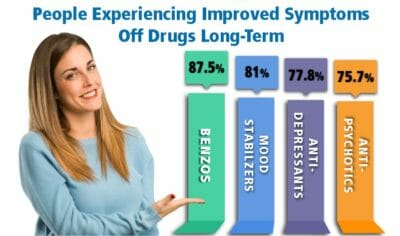Tranxene — Generic, Brand, and Slang Names
Tranquilizers are commonly sold on the street for their euphoric effects and are sometimes referred to as “blue bombs,” “tranks,” “downers,” “blues,” “ruffles,” or other slang terms.
Tranxene is the brand name for the generic benzodiazepine called clorazepate. Tranxene was presumably named after its tranquilizing effects.
Tranxene Adverse Effects
Like other tranquilizers in the benzodiazepine class, Tranxene is used as an anti-anxiety, anti-convulsive sedative. Tranxene may also cause additional adverse effects, some of which are listed below. Always be aware of changes that occur and see your prescribing physician if anything unusual or concerning happens. The following Tranxene adverse effects were reported on the drug label before the drug was approved, and also from clinical studies done post-marketing.1
Tranxene reported adverse effects can include:
- Suicidal thoughts
- Cravings for more of the drug than was prescribed
- Depression
- Tremors or other movement disorders, tics, spasms
- Loss of memory, amnesia
- Changes in energy, i.e., fatigue, drowsiness, tiredness
- Changes in vision, i.e., blurred vision, altered perception, sensitivity to light
- Emotional reactions, mood swings, sadness, nervousness, agitation, irritability, anger
- Sleep disturbances, insomnia, nightmares, unusual dreams
- Aches and pains, such as headache, stomach pain, muscle aches
- Digestive or gastrointestinal changes, such as constipation, nausea, vomiting, diarrhea, urinary problems
- Loss of balance, dizziness, vertigo
- Cognitive changes, such as confusion, inability to focus or concentrate
- Skin rashes can be severe with fever and other symptoms requiring medical attention
- Dry mouth
Signs of Developing Dependence to Watch For
Though the risk of becoming dependent on Tranxene is high, signs of developing dependence may not have been discussed or explained in any detail prior to being prescribed. This is especially true when the prescription was intended for short-term use. For persons under psychiatric care, it is more frequent that long-term prescriptions occur, and this can lead to extreme and debilitating situations of developed dependence as noted in clinical studies.11,12
Self-education is self-empowerment. We recommend and encourage learning more about how benzodiazepines can cause dependence over time. While every person is a unique individual, there are some common signs to watch for so that help can be sought before the situation gets out of control. Eventually, the GABA receptors down-regulate, meaning they become less responsive to the drug. Anxiety and even panic attacks may begin to occur. The inclination then is to increase the frequency or to up the dosage. This is a sign of developing dependence.
A condition known as “emotional anesthesia” may occur over time, and is a sign of neuroadaptation, where normal emotional responses become blunted. Normal reactions such as being pleased about something good begin to fade away. This can become noticeable to others even before the person taking benzos is aware of it happening. And this can take a toll on personal relationships, working with others, and can lead to a sense of overall dissatisfaction and a lowered quality of life.
In the beginning, benzodiazepines may have significant anxiolytic effects, such as daytime drowsiness, loss of mental alertness, or other hypnotic-type effects. Over time, however, these effects tend to diminish and while daytime sleepiness or muddy thinking may no longer be a problem, insomnia may become problematic. Generally, the anxiolytic effects diminish within 4 – 6 months but in an effort to prevent withdrawals, the prescription is often continued well beyond this point of tolerance.
The effects of Tranxene tolerance, like other benzodiazepines, can mimic anxiety, insomnia, and other original symptoms. This can add a factor of confusion to a treatment plan as original symptoms and symptoms of Tranxene dependence may overlap to a great degree. Increasing the dosage may initially quell these reactions, but over time the problem will only continue to escalate.
Feelings of reliance on the drug, lack of self-confidence unless taking the drug, and drug-seeking behaviors can be additional signs of developing tolerance and dependence. Sometimes anticipating anxiety rather than experiencing it is a psychological factor, that may be an indicator that over-reliance on the drug is occurring.
Another sign is when taking the drug doesn’t provide the desired effect, drinking alcohol or taking other substances for anti-anxiety effects is a particularly urgent red flag. This is because taking several CNS suppressants at the same time can introduce the risk of over-sedation, and overdose. Memory impairment can further escalate the problem as one may not remember when or how much they took clearly.
IMPORTANT NOTE: The importance of not abruptly stopping the drug cannot be overstated. Always seek help to manage a gradual, safe rate of withdrawal from a qualified professional who is familiar with the subject.

 Alternative to Meds Center has helped many thousands of clients achieve their goal of comfortable, safe tapering and restored health, focusing on holistic methods of care.
Alternative to Meds Center has helped many thousands of clients achieve their goal of comfortable, safe tapering and restored health, focusing on holistic methods of care.








